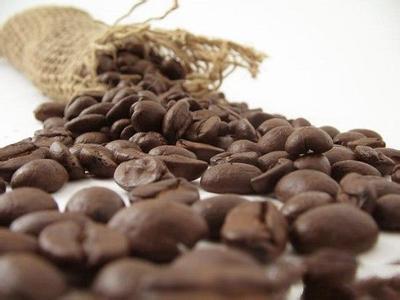Coffee flavors from different coffee producing areas around the world Ethiopia
The coffee tree originated in Ethiopia, where it was originally a wild plant, and the name coffee comes from the Ethiopian town of Kaffa. Humans probably knew how to cultivate coffee trees as early as the 9th century.

Coffee production in Ethiopia:
Many coffee trees in Ethiopia are still wild plants, and the coffee grown on these trees is full of particles and slightly fragrant. Today Ethiopia is an important coffee producer and Africa's leading exporter of Arabica coffee beans. The quality of the coffee here is excellent.
Ethiopia has a variety of coffee cultivation methods: from wild coffee groves and semi-developed plots, to small plots of traditional farming, to modern plantations. About 50 percent of coffee is grown at altitudes of more than 1500 meters.
Harrar coffee is the highest coffee grown in Ethiopia. Hara coffee can be divided into long coffee beans and short coffee beans, of which long coffee beans are the most popular. It has a soft taste, with a wild aroma, and slightly sour, after drinking unforgettable.
Djimmah coffee grows wild at more than 1200 metres above sea level and is sold under the Limu and Babeka brands. Other coffee names include Sidamo coffee from Central, sold under the brand name Yirgachaffe, and coffee with distinctive flavor from Lekempti. Jima and Sidamo coffee beans are not pleasant in appearance, but they taste good.
The rarest Ethiopian coffee beans on the market are the Ilga Chafee beans, which are exported to Japan and Europe but are rarely seen in the United States. This is because Dallmeyer, a German coffee roaster owned by Nestle, has established close ties with the growers of Ilga Chafee coffee, thus obtaining the largest single supply of the beans.
Ethiopian coffee flavor is difficult to describe, it is neither strong, sour nor very obvious. Therefore, it is not suitable for deep baking, otherwise it will easily lose its characteristics.
Features of Ethiopian Coffee:
Ethiopian coffee is somewhat similar to the famous mocha coffee. Of course, quality Ethiopian coffee can be compared to the best coffee from around the world, including its considerable price.
Ethiopia has the highest domestic consumption of coffee in Africa. In the countryside, it is often served with a herb called Health of Adam: fresh coffee beans are roasted and mashed with herbs, then the mixture is brewed and drunk in small cups, often served with pancakes to bring out the bell pepper flavor of the pancakes.
Flavor: Very unique, delicate and rich in taste, with fruity and savory aromas.
Recommended baking method: medium baking
Important Notice :
前街咖啡 FrontStreet Coffee has moved to new addredd:
FrontStreet Coffee Address: 315,Donghua East Road,GuangZhou
Tel:020 38364473
- Prev

Coffee flavors from different coffee producing areas around the world Tarasu of Costa Rica
Coffee flavor from different coffee producing areas around the world: Tarrazu in Costa Rica is one of the major coffee producing areas in the world, with a light and pure flavor and pleasant aroma. Costa Rican coffee has full grains, ideal acidity and unique strong flavor. Tarrazu of Costa Rica is one of the major coffee producing areas in the world, with a light and pure flavor.
- Next

Coffee flavor from different coffee producing areas around the world coffee producing areas in Colombia
In 1808, coffee was first introduced to Colombia, which was brought by a priest from the French Antilles via Venezuela. Today the country is the second largest producer after Brazil. Colombian coffee origin: Colombian coffee is one of the few original coffee sold in the world under the name of the country. In terms of quality, it has acquired other
Related
- Detailed explanation of Jadeite planting Land in Panamanian Jadeite Manor introduction to the grading system of Jadeite competitive bidding, Red bid, Green bid and Rose Summer
- Story of Coffee planting in Brenka region of Costa Rica Stonehenge Manor anaerobic heavy honey treatment of flavor mouth
- What's on the barrel of Blue Mountain Coffee beans?
- Can American coffee also pull flowers? How to use hot American style to pull out a good-looking pattern?
- Can you make a cold extract with coffee beans? What is the right proportion for cold-extracted coffee formula?
- Indonesian PWN Gold Mandrine Coffee Origin Features Flavor How to Chong? Mandolin coffee is American.
- A brief introduction to the flavor characteristics of Brazilian yellow bourbon coffee beans
- What is the effect of different water quality on the flavor of cold-extracted coffee? What kind of water is best for brewing coffee?
- Why do you think of Rose Summer whenever you mention Panamanian coffee?
- Introduction to the characteristics of authentic blue mountain coffee bean producing areas? What is the CIB Coffee Authority in Jamaica?

